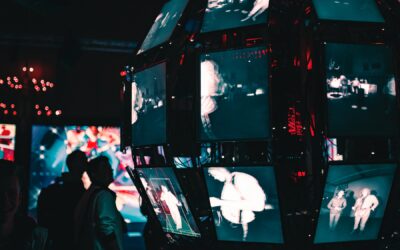We’ve all had some form of exposure to the world of augmented reality. The layering of computer-generated content over real-world environments is nothing brand new. Yet, AR for business has transformed the technology from a novelty entertainment concept to an imperative enterprise tool. In fact, 23 million jobs worldwide could be directly affected by AR and VR by 2030 (Statista). 824,000 of those jobs are currently using these technologies in their workplace.
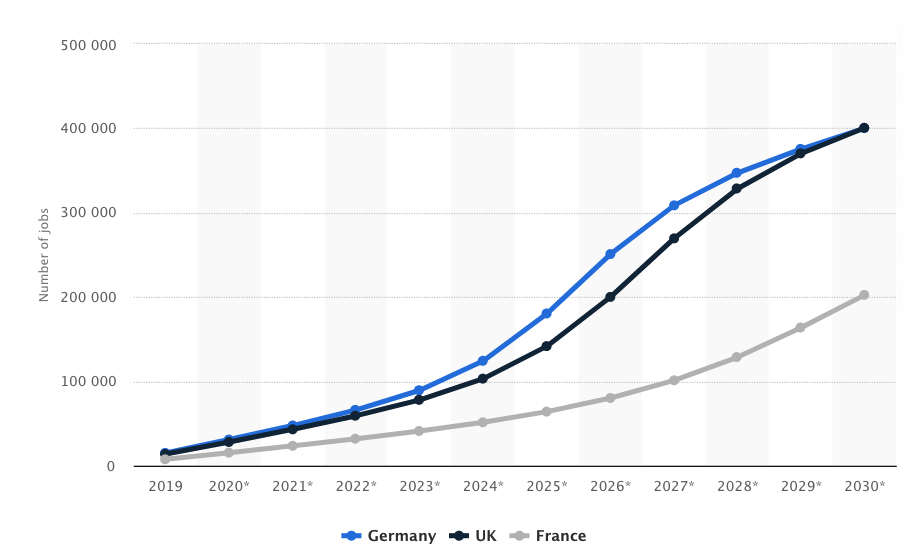
(Image showing the number of jobs enhanced by VR and AR in Europe’s leading economies 2019 – 2030. Image: Statista)
What exactly is augmented reality?
Here’s what you probably already know; AR lets you aim your smartphone camera at an object’s, landscape or building, and other elements materialise into your real-time screen.
This is made possible by AR’s capabilities to layer digital information in some form atop the real-world view in which we perceive. It effectively ‘augments’ or ‘enhances’ our experience of the world around us.
AR content can materialise in the form of text, graphics, audio and other virtual enhancements integrated with real-world objects. But how can we render such enhancements of reality? Microsoft’s HoloLens headset has been a prominent tool in the AR landscape. But it should be noted that AR is a versatile technology that is merely carried by headset devices.
Indeed, smart devices like phones and tablets are far more common carriers of augmented reality technology. Today, AR can be experienced at scale on handheld devices like phones, magic mirrors and smart displays, as well as projection mapping experiences.
The ubiquity of mobile devices, combined with the speed at which wearable AR devices are entering the market suggests that the AR industry is poised to take off. But in what direction? The emerging use of AR in business has both changed the way in which businesses operate, as well as the tools, platforms and applications of augmented reality developers.
How is Augmented Reality Used in Business
Augmented reality effectively blurs the lines between the physical and digital world. As such, it offers a completely different way to interact with customers, colleagues, suppliers and prospects. So far, augmented reality has demonstrated significant market potential- and it’s only at the initial stages of unlocking its true capabilities.
Consider for a moment that you are shopping for a jumper, a new coffee table, or holiday destination. You’d probably find yourself online, flipping through magazines or inside physical stores. Now reimagine your shopping experience from the comfort of your own home and in a completely immersive way. Smartphone apps have the capacity to show you, in real-time and to scale, precisely what that new coffee table would look like.
Businesses are constantly trying to improve user-experiences, and customers, on the whole, welcome new, efficient and exciting trends. Hence, there’s clearly room for AR technology in our vastly consumption-led lives. From a business standpoint, augmented reality offers far more than enhanced customer experience.
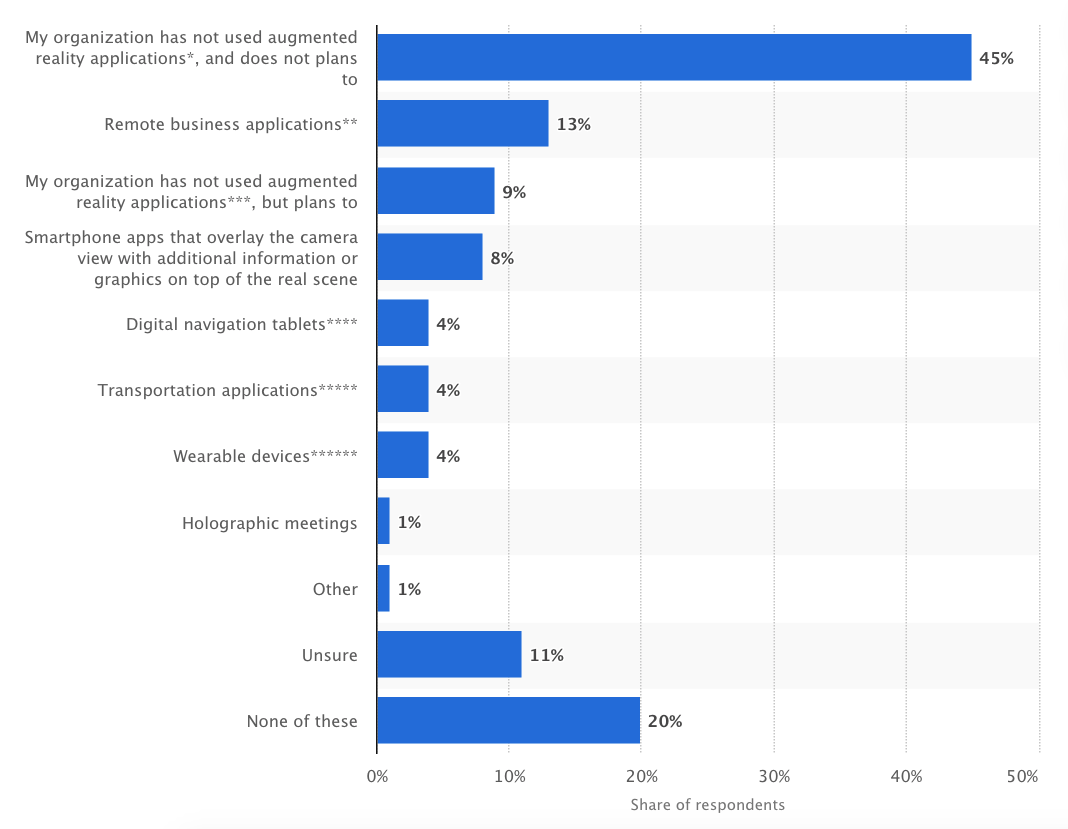
(Share of augmented reality applications used by organisations in Europe. Image: Statista)
For those businesses who are utilising AR, how has doing so, and under what application, has AR for business improved efficiencies, boosted sales, improved marketing and overall business performance? From recruitment, training and communication, to product development, marketing and maintenance; augmented reality has proven its worth as an indispensable business tool.
Recruitment and Training
In 2017, People Management reported that the rise of immersive technologies in learning and development concluded that augmented and virtual reality was the future. Three years later, we can confirm that the use of AR has extended beyond training staff remotely.
Gone are the days of sifting through resumes and making company-changing decisions based on what a candidate thinks you want to hear. Modern enterprises are opting for new VR and AR technologies to find enhanced efficiencies.
For example, a company called Mesmerise provide a VR and AR platform for companies to create training programmes for employees. As an example, Mesmerise developed a simulation for Allianz Engineering Training for commercial engineers working at heights.
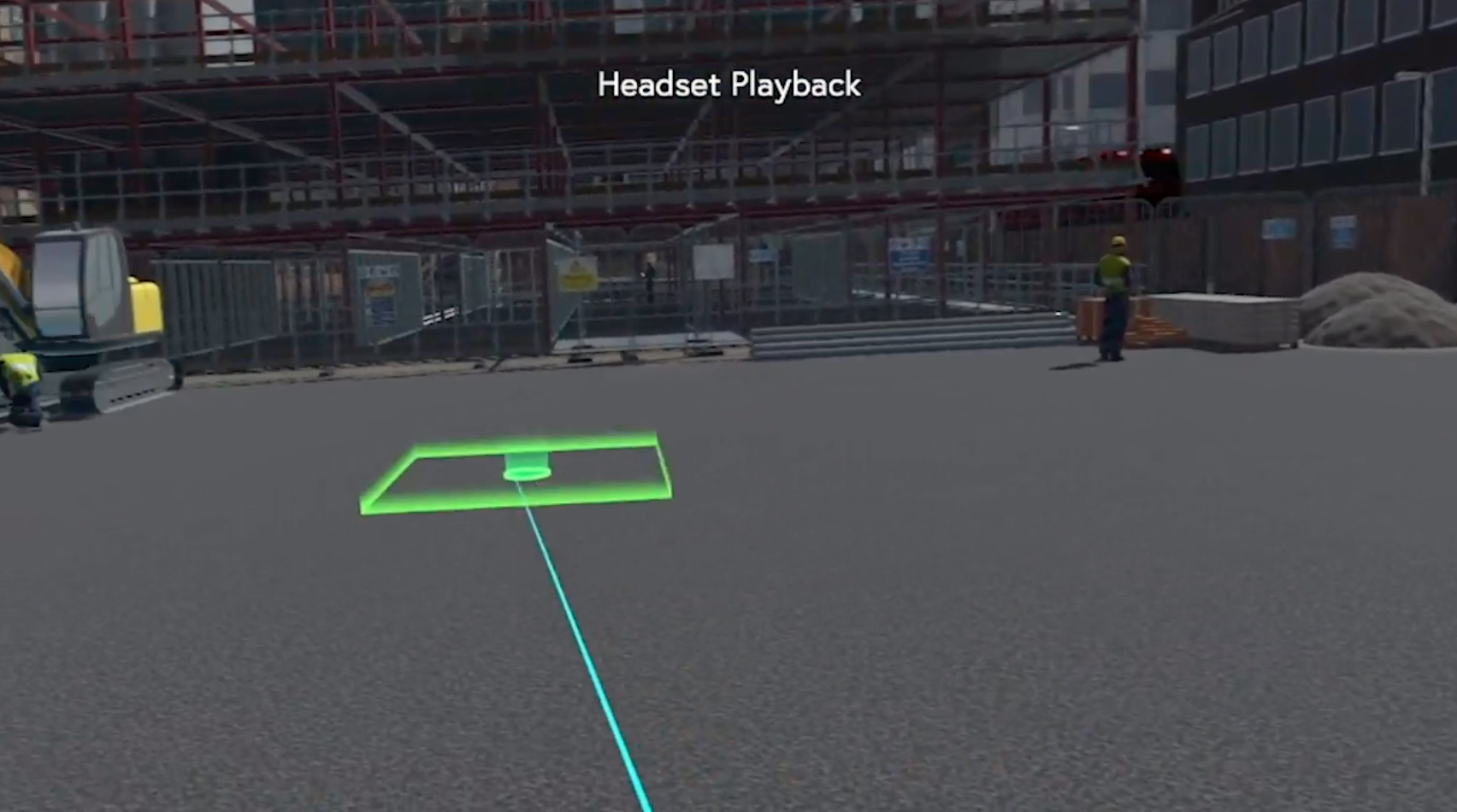
The modern recruitment process through AR and VR can provide future recruits with the tools they need to experience the workplace remotely. Given the surge in remote-hiring during the WFH period, these technologies are appreciated more than ever. Rather than numerous candidates spending considerable amounts of time in a company’s workplace to evaluate its prospective pros and cons, they can now enter a Virtual Reality (VR) based simulation of the office.
Speaking briefly of VR, Lloyds Banking group recently incorporated virtual reality for the assessment process of its Graduate Leadership Programme candidates. The programme included puzzles in a simulated environment and candidates were judged based on the results which showcased their strengths.
Recruitment is one of the most important processes all businesses go through. It’s a competitive field since all companies are trying to pull the best talents from the market. As such, using new and innovative ways to communicate with and assess prospective candidates, is key to strengthening a company’s workforce.
When it comes to training an existing workforce, AR can help to upskill employees by re-imagining the traditional tools used to train employees. A mixture of close supervision, engaging tasks and interactive materials create good environments for new recruits. Whilst this core approach won’t change, the tools we use to carry out the process will improve
AR immerses people into a pore-designed world. Words in a textbook can teach and have been a core part of the training process across all industries. But the technology that enables a written page to come alive leaves a vivid and lasting impression.
Effective use of AR in a complex training situation was developed by a property company who made a Just In Time training programme. It used tags to implement onsite instruction points for their maintenance staff. Each tag, placed around the property can be scanned on a smart device to find the relevant training protocol. The maintenance staff receive their training as and when they need it- without pressure on management to execute an IRL programme.
Product Development
The use of AR not only improves user experience and helps to train a more skilled workforce, but in product development as well. According to PwP, all industries can benefit greatly from using augmented reality to simplify the development of products and services.
Digital visualisation makes it possible to organise processes and workflows more efficiently and has massive implications on human collaboration. AR has the capacity to enable location-independent interactions with products through internationally distributed teams and more recently, prolonged crises, such as the global pandemic.
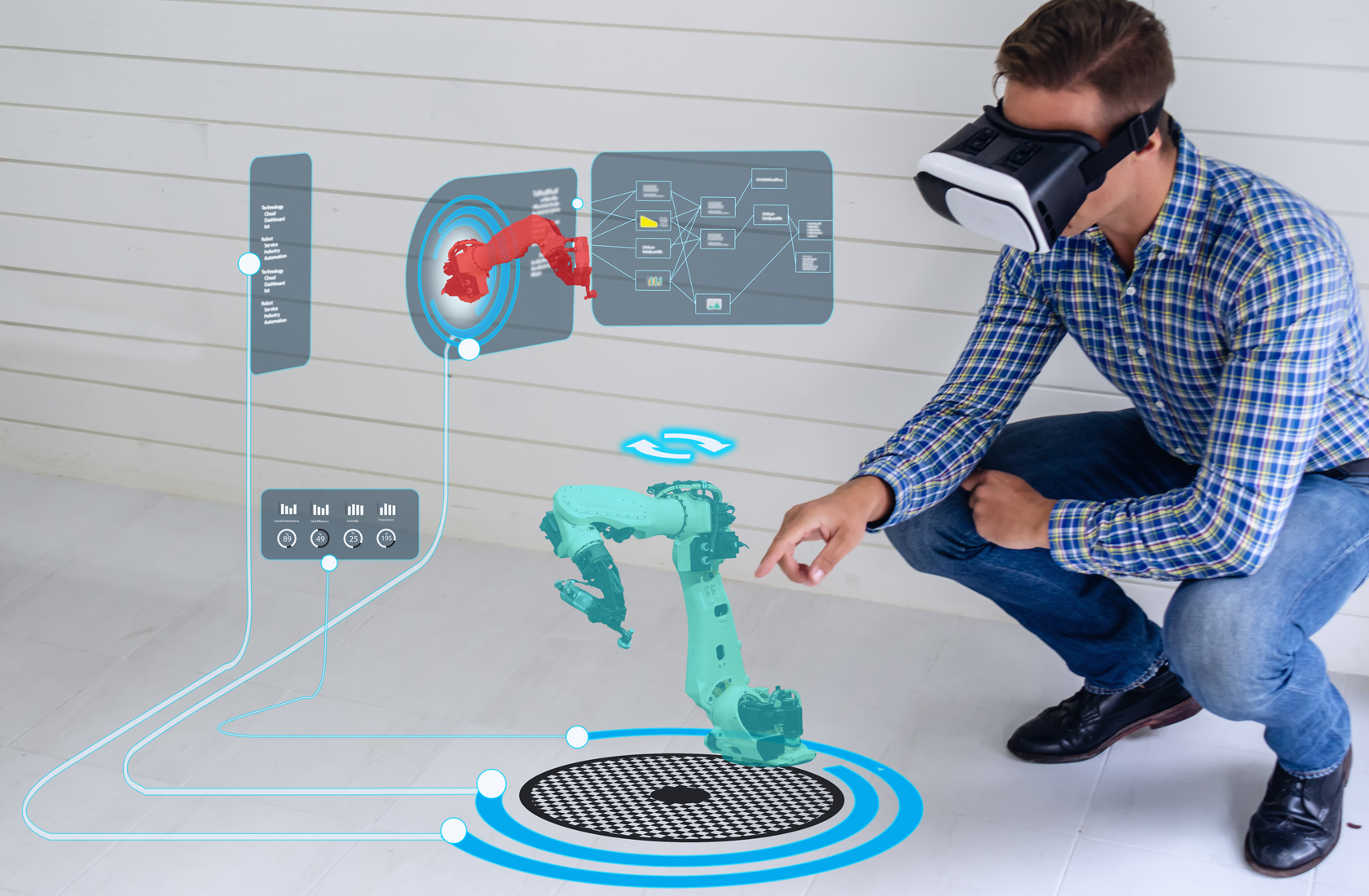
(Image: EssentraComponents)
Benefits of AR for product development:
- Lower development costs
- Increased safety and minimise risks
- Quicker development turnaround
- Improved collaboration through joint access to relevant data
- Product optimisation by identifying errors early on
- Product visualisation for external departments, partners and customers
Augmented reality solutions allow everyone involved in the product development to interact with it using smart devices, wherever they are. AR lets developers get up close and personal with the project by letting them visualise the product remotely, walk around it, step inside it and see it in 3D, examine details from all angles, compare variants of models, give feedback and make changes to the model in real-time.
This increased flexibility reduces hassle and costs when developing and testing prototypes. Conventional prototypes have to be manually constructed and physically sent to different locations, simply to enable a discussion. AR product development allows for further and instant development, changes, the implementation of technical variations and shared in real-time with the entire development team.
Optimising products and identifying problems early on isn’t exclusive to the development team. Concept ideas, technical specs and different design ideas can be presented to other departments, customers, investors and stakeholders. This is an important feature when it comes to complex structures or large and imposing products in the industrial sector. Anyone with a stake in the finished product, can from the early days of its inception envisage it complete and how it will integrate into its surroundings.
Increase sales
Augmented reality has become a warmly welcome component within sales and marketing strategies. Mobile devices have become the most used devices through which consumers interact with brands and make purchasing decisions. AR is an additional tool under any salesman’s belt when it comes to closing deals, driving sales and enhancing brand value and awareness through mobile devices.
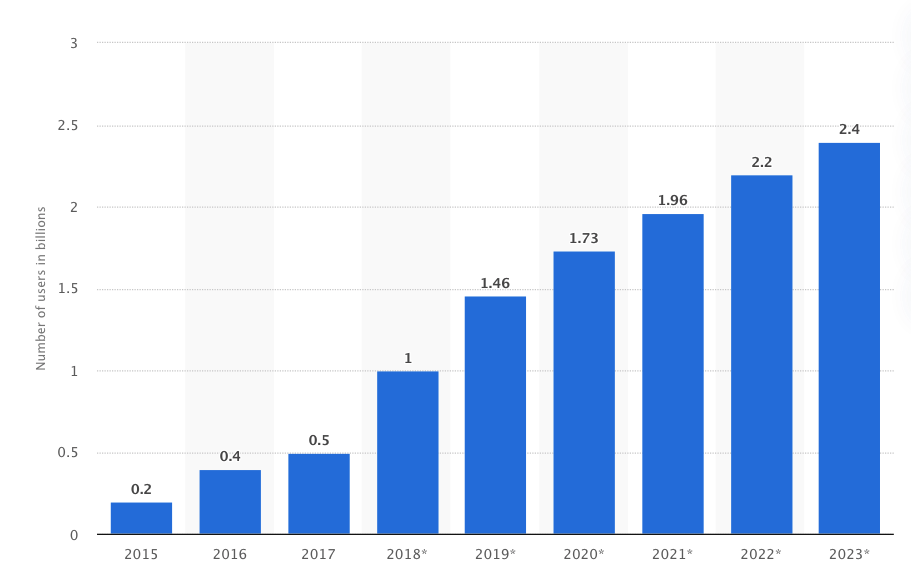
(Number of mobile augmented reality (AR) users worldwide from 2015 to 2023. Image: Statista)
There’s no doubt that AR has the power to influence people buying decisions. AR has the capacity to evoke emotions and create a deeper ownership feeling. Consumers are more likely to invest in products they have a connection with. Whether that’s familiarity or a common and shared goal. Meaning, if customers had the time and right level of engagement with a product, combined with the ability to actually visualise owning it, the chances are, they’ll make the purchase.
Traditionally, customers want to try a product before they buy it. From clothing to cars and houses. Fitting rooms, cosmetic samples, car showrooms and practically all other industries testify to the effectiveness of this sales strategy. Augmented shopping experiences are on the rise.
AR enables prospective customers to model and try on clothing, makeup, hair cuts and colours, home furniture and more- without the need to physically interact with them. We know that fitting rooms and test drives are an important part of the sales process. AR combines this concept with convenience, speed and accuracy.
AR try before you buy in action
As more and more businesses come to realise the effectiveness of AR in their sales funnel, they’ve respectively begun to develop their own fitting versions of AR try-before-you-buy apps. Facebook has been a keen pioneer of AR applications- offering users to digitally sample makeup and accessories for example. Their first AR-based advertisement let potential customers try on virtual sunglasses using their smart device camera.
The cosmetics industry has not lagged behind and has been enthusiastic about embracing AR. Sephora, L’Oreal and Perfect Corp have joined forces to create a virtual experience for their customers. This strategy proves particularly effective in industries where customers expect to be able to try before they buy.
Virtual fitting rooms have taken the shopping scene by storm in recent years. Brands like Topshop and Timberland have been at the forefront of developing AR fitting rooms. Visa Europe App has elevated this sales process using AR by allowing users to simply scan an item of clothing, on the rack or on a person to make an immediate purchase.
When it comes to B2B sales, the process has historically been fraught with a tug of war between customer expectations and what the vendor is realistically able to provide. Augmented reality has the scope to create improvements along the entirety of the sales process.
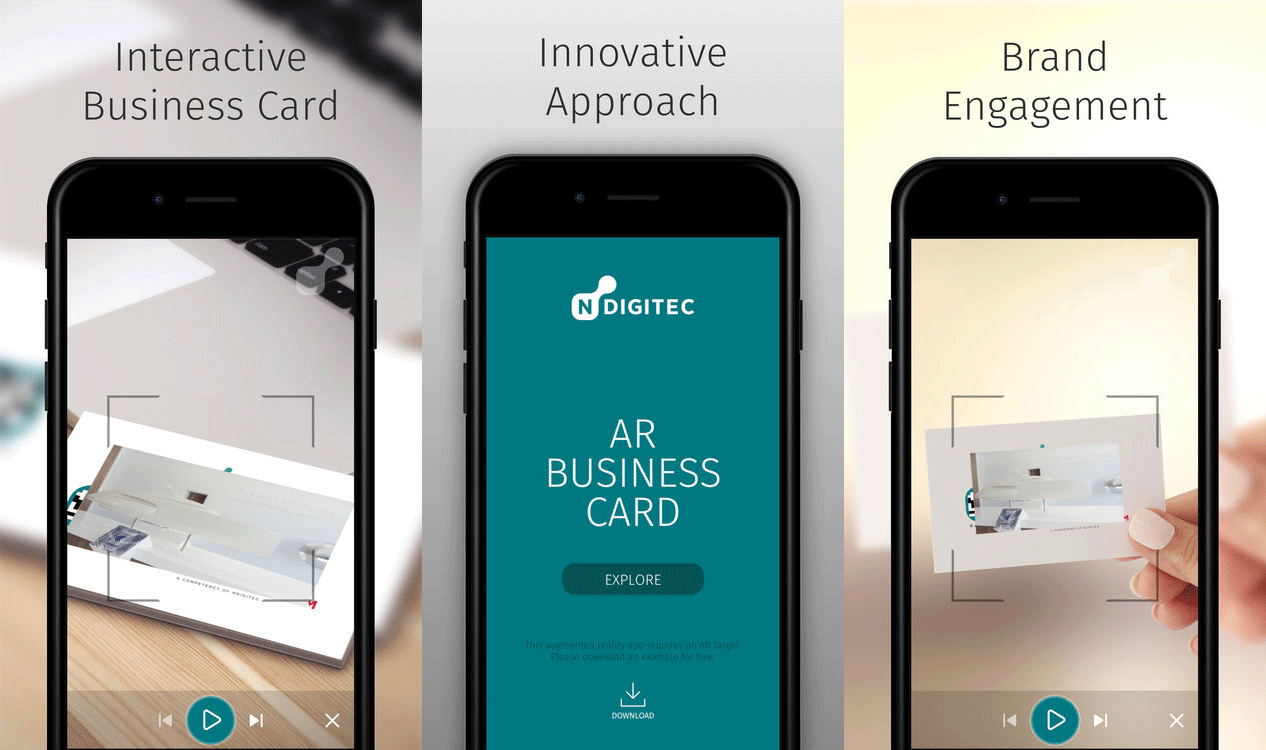
(Interactive business cards using AR. Image: Medium)
Consider the effects of AR in creating dynamic sales presentation material. Traditional salesmen with brochures and flyers are understandably overshadowed by those equipped with digital devices enabling access to custom AR apps and 360-degree visualisations. Such AR sales tools can allow customers to see and interact with the digital content by bringing the product into the meeting room- all stakeholders find access to better information before making a decision.
AR plays an important role in optimising the post-sales process too. Often, customers will find themselves relying on online information or user manuals that can be difficult to navigate. This often leads to frustration and taking their business elsewhere. AR has the potential to offer immersive, easy to access information on a product, through a smart device.
Augmented Reality in Marketing
Marketing encompasses a range of tools to promote and sell a product or service. It typically includes a host or market research and advertising. The aim is to deliver engaging and enticing information to prospects, in the hope they’ll turn around and become paying customers. Traditionally, marketing has had a history of flashy sales advertising. The rise of the internet gave way to social media marketing. Today, the future is in augmented reality.

(Marketing related challenges. Image: Statista)
AR can take traditional branding materials like business cards and brochures to new, exciting and immersive levels by adding a virtual and interactive component. A popular AR marketing technique has enabled users to scan printed materials with their smart devices to access a range of interactive features.
For example, a user can scan a magazine and find access to relevant video content highlighting more information on the brand. This dynamic element to the static text can be found in TopGear’s interactive magazine. AR can also provide instant contact details for customers. A business card, for instance, can be scanned to provide a user with reactive contact information, like phone, email or LinkedIn.
Thus far, AR has aided the recruitment and training process, communication, sales and B2B relations. AR also has a critical role to play in generating buzz around the brand and elevating the status of a company. Creating fun and novel experiences with AR for customers can result in significant buzz. It’s practically a PR tool. Since AR is a relatively new concept for many people- a sophistically designed AR experience will get people talking and generate lasting memories.
Examples of using AR to generate buzz
Pepsi’s London bus stop campaign allowed users to access an AR ‘virtual window’ positioned against the wall. Those who engaged were greeted with tigers, giants and robots running loose within the AR vista. Pepsi took a relatively mundane experience and transformed it into something you’d immediately tell your friends and family about. By generating discussion, they strengthened their brand.
Before long, Uber followed suit with its AR campaign in Zurich, giving an interactive AR experience to their riders and in turn- generating over a million YouTube views.
In 2012, not only did Taco Bell entice visitors to come in for their new Dorito taco shell, but also to play with their augmented reality packaging. They placed an AR feature on each box and soda cup for their Dorito shell campaign. After a quick scan of the box, users found access to product-related Twitter and Facebook content on their phones. This live social media content meant that Taco Bell brought together its community and showcased their brand using AR.
Upon marketing season two of the Netflix original Stranger Things, the company launched a series of AR and VR lenses on Snapchat- allowing users to record themselves walking through houses seen in the show. They also leveraged AR filters to promote the rest of its content.
In short, when AR is thrown into the marketing mix, its capacity to provide a novel way of learning about your products and services, is ultimately your marketing job done. AR brings better visual recognition and emotional attachment than any other form of media. Sales cycles are shortened, purchasing processes are simplified and customers are engaged with your brand.
AR is an important tool in marketing because customers often rely on a combination of logic and emotion before making a purchase. They will weigh up the pros and cons and need complete information to do this effectively. If traditional marketing efforts aren’t persuasive or informational enough; customers will switch to a more engaging brand. The visualisation accompanied by AR can help give shoppers a complete understanding of a product or service. Whether that’s by trying a product before they buy it, getting a 360 product view, or being directed to live social media feeds to find more relevant information and discussions.
Communication in business
Corporate communications can often include a wide network of people who need to be kept in the loop. Within this realm of communication, there are a number of potential applications for AR.
Data visualisation, for instance, has always been critical to the success of a corporation. The ability for everyone involved to access, dissect and discuss the data is imperative to unhindered operations. Both internal and external audiences need access to a wide range of data- including performance metrics and social responsibility information. Reported by IT Business Edge, AR solutions can help brands, large and small, to develop live and interactive data simulations targeted to specific audiences in real-time.
Strategic communications often require an ‘in-person experience’. Holographic applications of AR like Microsoft’s “holoportation” technology can help simulate this close, inter-personal feeling. It works by generating a holograph of a person- who can then deliver a message projected to multiple people and locations, whilst eliminating the need to travel.
With regards to customer communication, the aim is to improve customer satisfaction, increase revenue per customer and reduce churn. Augmented reality can help to improve customer communication and satisfaction in a number of ways. The notion of customer satisfaction depends on the following things:
- Product assortment
- Adaptability
- Commitment to the customer
- Connection with other customers
- Easy transactions
- Appealing environment
Considering AR is a way to bring virtual things into the real world, the role of AR in ensuring customer satisfaction based on the 6 factors becomes clear. Take adaptability in healthcare for instance; a physiotherapy patient who needs to practice certain exercises could be able to use an AR-enabled smartphone app using accelerometer data to track the patient’s movements and guide them through the appropriate exercises.
When AR is implemented well in business, it essentially brings the customer closer to the product or service. In many cases, such proximity makes most customer communication unnecessary.
How can my business use AR effectively?
As noted, the application of AR should be used well in order to recognise business efficiencies. To ensure the appropriate use of AR for your business, consider focusing on three main qualities:
- Simplicity is key
- Expand on natural experiences
- Leverage internal innovators
For most people, augmented reality is a relatively new concept. There will probably be a large portion of your target market who perhaps may have never engaged with AR before. Therefore, if the user experience is too complex, chances are, you’ll lose them. Keep in mind, AR should be an enhancing tool and easy to use. If it’s not, then it’s superfluous.
Unless you’re creating an ‘out of this world’ campaign- don’t make the experience too far removed from reality. The key is to enhance the real-world. After all, Virtual Reality is best for fully immersive simulations. To do augmented reality well- do just that. ‘Enhance’ reality.
Leveraging your internal innovators is one of the best ways to generate an AR experience that tells an appropriate story of your brand. Get together your most forward-thinking team members and use their knowledge and experience of your business to spark meaningful ideas for AR application. It pays to lean on team members who already have some idea about the constraints and possibilities of AR. These lead to better ideas and preparation for implementation.
Augmented reality presents a massive opportunity of engaging millions of users. The development of apps, tools and devices is on an upward trajectory and more and more businesses will be augmenting the environment around us. Become part of that new reality by incorporating AR into recruitment, training, sales, marketing, finance and communication channels.






